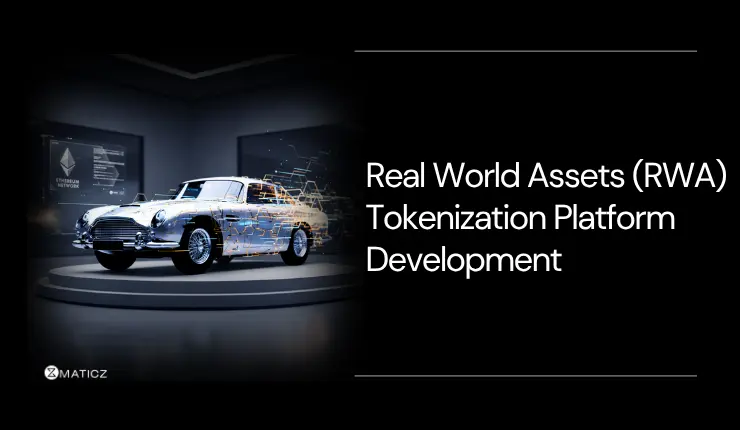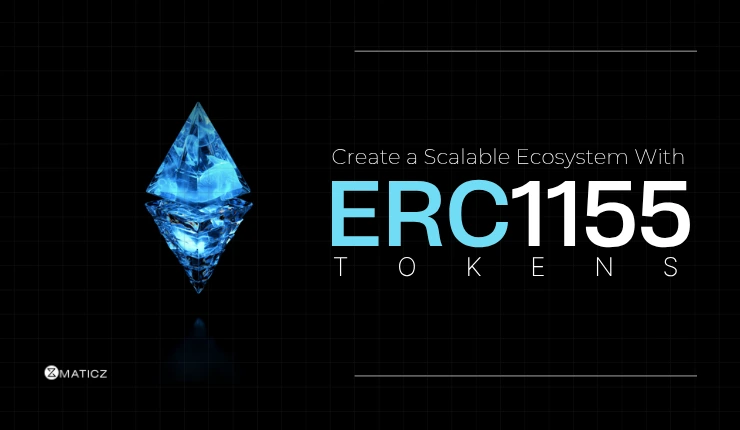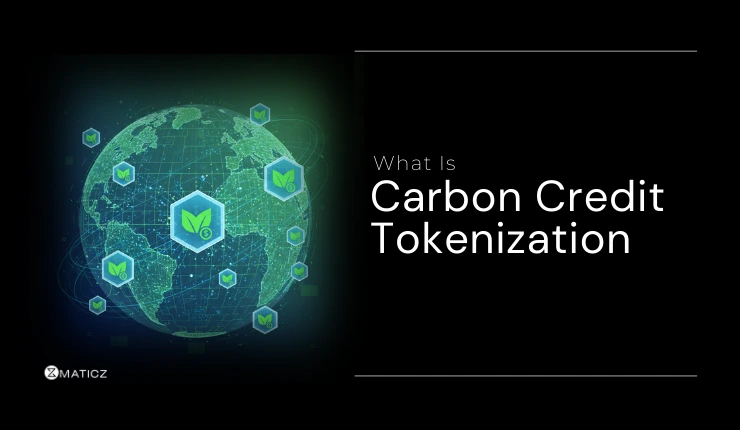Share Posts

Asset Tokenization: Defining Tokenization of Assets
110
5839
103
Recently, financial institutions have started to tokenize real-world assets using blockchain networks. It has received a lot of attention in the world of finance.
Asset tokenization serves as one of the top blockchain technology trends opening new opportunities for tokenizing anything and everything in the marketplace. This leads to more people getting access to global trade in a way that serves a broader range of wealth.
According to some studies, asset tokenization will become a market worth of at least USD 10 trillion by 2030 which is a 40 times increase in the value of tokenized assets recorded in 2022.
Currently, tokenized assets traded on the market value around $25 billion in market capitalization and are expected to grow 200 times more in this decade alone.
In this blog, we have discussed the whole concept of asset tokenization in detail and what it means for investors like you. We'll explore different industries that use this technology and why it's so important to have asset tokenization on the blockchain. So, let's dive in.
What is Asset Tokenization?
Asset tokenization is a process in which a blockchain token is issued to digitally represent any real tradable asset. Among various use cases of blockchain, asset tokenization is also one of them. It facilitates the buying, selling, and exchange of digital assets on the distributed ledger.
Through asset tokenization, one can tokenize a real-world asset such as artworks, properties, commodities, gold, etc, to convert them from physical to digital assets so that they can be easily traded online without the need for paperwork and intermediaries.
After tokenizing assets, they can be divided and fractionalized allowing users to trade even with a single fraction of the asset. This has reached a broader audience who want to invest in certain assets.
Through tokenization, all virtual and real assets can be converted into digital tokens. The main purpose of tokenizing assets is to create a virtual investment medium on the blockchain linked to tangible things like land, gold, artwork, and collectibles.
How Does Asset Tokenization Work?
Smart contracts play a major role in transforming physical assets into digital tokens. Digital tokens created through asset tokenization are backed by underlying assets. They are controlled and executed using a smart contract in which the conditions of the involved parties are put into lines of code.
Once the conditions put forth are met, tokens are issued to the investors through a smart contract. By making everything based on contractual terms and conditions, asset tokenization provides transparency, accuracy, and efficiency to all those involved in tokenization.
In the process of asset tokenization, informatic code is developed that points out the essential elements of a certain asset and also the ways through which users can interact with the digital representation of that asset.
How to Tokenize Assets?
Tokenizing assets involves transforming real-world assets into digital tokens that open up numerous benefits such as increased liquidity and fractional ownership. But you might have a question on how to do it the right way. For that, we have provided a step-by-step guide on how to tokenize assets. By following the below-mentioned steps, you can easily get through it.
Choose The Asset To Tokenize
The first step in the process of asset tokenization is to choose the asset you want to tokenize. It could be anything such as commodities, currencies, intellectual property, fine art, or other assets. Some of the other factors that need to be considered during asset tokenization are the number of tokens to be created, the mechanism, and other custom parameters.
Define Token Type
Once you are done with choosing the asset to tokenize, the next step is to determine the token standard. The most commonly used token standards for asset tokenization are ERC-20, ERC-721, and ERC-1400. Depending on the fundamental properties of chosen assets, the purpose they intend to serve, and authorization rights, the token standards vary.
Determine Compliance Requirements
Before proceeding with tokenizing assets, it is important to analyze global-, country-, and industry-specific regulations relevant to the assets. For instance, if you have selected financial securities, then you should analyze SEC regulations and for healthcare-related assets, you should go over HIPAA.
Develop Tokenomics
The next step involved in the asset tokenization process is to create tokenomics models for the asset to be tokenized. This model outlines all details related to the token including the token supply, token value, demand characteristics, and rights associated with assets.
Choose The Blockchain Platform
Next, you need to choose the blockchain platform on which the tokens will be issued.
Based on your unique requirements, it is essential to select an optimal blockchain platform to tokenize your assets. It varies based on some factors whether the tokens should be issued in a public or private blockchain.
Create Smart Contract
After choosing the blockchain platform, you need to create a smart contract. It contains the rules and conditions associated with the tokens. This step is considered the most crucial one in the whole development process since it helps with certain processes such as dividend distribution, asset transfers, and compliance checks with relevant legal regulations.
Tokenize the Asset
Before implementing the chosen model for representing assets, certain aspects should be taken into account such as the degree of data trust and scaling needs. Implement the tokenization process by dividing the asset into digital tokens based on the rules defined in the smart contract. These tokens are then registered on the chosen blockchain, creating a transparent and immutable ledger of ownership.
Examples of Tokenized Assets
Let’s take a look at some of the examples of tokenized assets.
Commodities
Financial sectors tokenize commodities on the blockchain into digital tokens that represent the virtual ownership of the underlying asset. These tokens can be traded on various blockchain platforms such as Ethereum or Binance Smart Chain without any intermediaries. After tokenization, those tokens can be easily traded and divided into small units. This allows for quick and cheap transactions at low costs.
Stocks and Securities
Traditional stocks and securities of companies are also being tokenized. By tokenizing stocks and securities, investors can even own a fraction of high-value assets that help them easily diversify their portfolio and access a wide range of stocks. Compared to traditional stock transactions that take days to clear, token transactions get settled in no time. Also, tokenized stocks and securities can be traded at any time.
Currencies
Financial institutions tokenize real currencies into digital tokens that are backed by real-world currencies held in reserve. These digital tokens are also called stable coins since they maintain stable value relative to the currency they represent. It allows faster and more secure transactions for fiat currency transactions. What is unique about tokenizing currencies is that it remains a bridge between the traditional financial system and the world of cryptocurrencies.
Intellectual Property
Tokenizing intellectual property involves representing ownership or rights to intangible assets, such as patents, copyrights, trademarks, or other forms of intellectual creations, as digital tokens on a blockchain. It allows creators to raise funds by offering digital tokens representing ownership or rights to their intellectual property. This creates a new avenue for crowdfunding, enabling a diverse range of investors to support creative projects. Creators can divide the ownership into smaller, tradable units, making it accessible to a broader audience of investors who may not have the means to acquire the entire IP.
Real Estate
Real estate is traditionally considered a less liquid asset due to the large capital required for property acquisition and the time-consuming process of buying and selling. Tokenized real estate assets can be bought and sold by investors from different parts of the world, expanding the potential market for real estate developers and creating a more globalized real estate investment landscape.
Art and Collectibles
Tokenizing art and collectibles involves representing ownership or rights to artistic creations or valuable collectible items as digital tokens on a blockchain. Tokenization introduces the concept of a secondary market for art and collectibles. Investors can trade their ownership stakes on blockchain-based exchanges, providing liquidity and flexibility in managing their art investments. Artists and creators can embed smart contracts in tokenized art, ensuring that they receive a percentage of the resale value each time the tokenized asset changes hands.
Use Cases of Asset Tokenization
By representing ownership or rights as digital tokens on a blockchain, asset tokenization brings forth a multitude of advantages, including increased liquidity, fractional ownership, and enhanced transparency. Let's explore the diverse use cases of asset tokenization across different industries.
Finance
Tokenizing traditional stocks and securities provides investors with fractional ownership, enabling them to diversify their portfolios easily. This move towards digital securities on the blockchain streamlines processes reduces costs, and enhances market accessibility.
Real Estate
Tokenizing real estate allows property owners to divide their assets into digital tokens, making it easier for investors to participate in real estate ventures with smaller capital contributions. Real estate investment funds can be tokenized, allowing investors to gain exposure to a diversified portfolio of properties. Tokenization simplifies the management of real estate funds and offers a more accessible entry point for investors.
Know more: Real estate tokenization services
Healthcare
Tokenization provides a new fundraising avenue for medical research projects. Researchers can tokenize their intellectual property or research findings, allowing supporters to invest in potential breakthroughs in healthcare. By tokenizing sensitive information, healthcare providers can enhance privacy and security, ensuring that patient records are immutable and tamper-resistant.
Benefits of Asset Tokenization
Asset tokenization comes with a plethora of advantages, fundamentally changing the way we view and interact with traditional assets. Here are some key benefits of asset tokenization.
High Liquidity
Investors can now buy and sell fractionalized tokens, enabling them to participate in the market with smaller capital contributions. This liquidity boost creates a more dynamic and efficient market, reducing the time and effort required to convert assets into cash.
Quick and Cheap Transactions
Asset tokenization eliminates the need for intermediaries, streamlining the process and reducing transaction costs. This efficiency not only accelerates the speed of transactions but also makes it economically viable for a broader range of investors.
Fractional Ownership
Investors can now own a share of real estate, artwork, or other valuable assets, breaking down the barriers to entry. This democratization of ownership opens up new investment opportunities for a wider audience and diversifies the investor base.
Enhanced Transparency and Security
Blockchain's immutable and transparent nature ensures that every transaction is recorded and easily traceable. Smart contracts, a key component of blockchain, also automate and enforce the terms of agreements, providing a trustless and secure environment for all parties involved.
Portfolio Diversification
Investors can now easily include a variety of tokenized assets in their portfolios, spanning different industries and geographies. This diversification helps mitigate risk and enhances the stability of investment portfolios, making them more resilient to market fluctuations.
Improved Accessibility
It lowers these barriers, making investments accessible to a broader range of individuals. This inclusivity fosters financial democratization, allowing people from various income brackets to participate in asset ownership and investment.
Know more: Asset tokenization platform development
End Notes
As we witness the transformative power of blockchain technology, it becomes clear that the path to financial innovation lies in embracing the possibilities it offers. Whether you're an investor, entrepreneur, or technologist, there are so many opportunities to explore in the world of blockchain development.
By embracing this technology, you can be a part of the future of finance, contribute to the evolution of asset tokenization, and help reshape the way we perceive and interact with value. So, why not jump in and see where this exciting journey takes you?
If you have any idea related to blockchain, approach Maticz, the leading blockchain development company. We help businesses integrate futuristic blockchain-based solutions. Reach out to us today.
Tap Into the Future
The latest insights, posts, and project updates - straight to your inbox.




